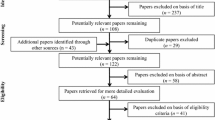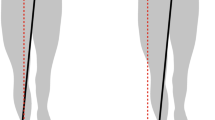Abstract
Objective
To evaluate the effects of Ramadan fasting on postural balance and attentional capacities in older adults.
Setting
the Neurophysiology department of a University Hospital.
Participants
Fifteen males aged between 65 and 80 years were asked to perform a postural balance protocol and a simple reaction time (SRT) test in four testing phases: one week before Ramadan (BR), during the second (SWR) and the fourth week of Ramadan (FWR) and 3 weeks after Ramadan (AR).
Measurements
Postural balance measurements were recorded in the bipedal stance in four different conditions: firm surface/eyes open (EO), firm surface/eyes closed (EC), foam surface/EO and foam surface/EC using a force platform.
Results
Results of the present study demonstrated that center of pressure (CoP) mean velocity (CoPVm), medio-lateral length (CoPLX) and antero-posterior length (CoPLY) were significantly higher during the SWR than BR. Likewise, values of CoPVm and CoPLX increased significantly during the FWR compared to BR. The CoPLX decreased significantly in the FWR compared to the SWR. Values of CoPVm and CoPLX were significantly higher AR in comparison with BR. In addition, SRT values increased significantly during the SWR and the FWR than BR.
Conclusion
Ramadan fasting affects postural balance and attentional capacities in the elderly mainly in the SWR and it may, therefore, increase the risk of fall and fall-related injuries. More than three weeks are needed for older adults to recover postural balance impairment due to Ramadan fasting.







Similar content being viewed by others
References
Vivanti A, Harvey K, Ash S. Developing a quick and practical screen to improve the identification of poor hydration in geriatric and rehabilitative care. Arch Gerontol Geriatr 2010;50:156–64
Lajoie Y, Gallagher SP. Predicting falls within the elderly community: comparison of postural sway, reaction time, the Berg balance scale and the Activities-specific Balance Confidence (ABC) scale for comparing fallers and non-fallers. Arch Gerontol Geriatr 2004;38:11–26
Gschwind YJ, Kressing RW, Lacroix A, Muehlbauer T, Pfenninger B, Granacher U. A best practice fall prevention exercise program to improve balance, strength / power, and psychosocial health in older adults: study protocol for a randomized controlled trial. BMC Geriatr 2013;13:105
Tsai YC, Hsieh LF, Yang S. Age-related changes in posture response under a continuous and unexpected perturbation. J Biomech 2014;47:482–90
Inzitari M, Baldereschi M, Di Carlo A, Di Bari M, Marchionni N, Scafato E. Impaired attention predicts motor performance decline in older community-dwellers with normal baseline mobility: results from the Italian Longitudinal Study on Aging (ILSA). J Gerontol A Biol Sci Med Sci 2007; 62:837–843
Maki BE, Cheng KC, Mansfield A, Scovil CY, Perry SD, Peters AL et al. Preventing falls in older adults: new interventions to promote more effective change-in-support balance reactions. J Electromyogr Kinesiol 2008;18:243–254
Jette AM, Branch LG, Berlin J. Musculoskeletal impairments and physical disablement among the aged. J Gerontol 1990;45:M203–8
Whipple RH, Wolfson LI, Amerman PM. The relationship of knee and ankle weakness to falls in nursing home residents: an isokinetic study. J Am Geriatr Soc 1987;35:13–20
Tinetti ME, Baker DI, McAvay G. A multifactorial intervention to reduce the risk of falling among elderly people living in the community. N Engl J Med 1994;331:821–827
Tinetti ME, Speechley M, Ginter SF. Risk factors for falls among elderly persons living in the community. N Eng J Med 1988;319:1701–1707
Müjdeci B, Aksoy A, Atas A. Evaluation of balance in fallers and non-fallers elderly. Braz J Otorhinolaryngol 2012;78:104–109
Hsu W, Chou LS, Woollacott M. Age-related changes in joint coordination during balance recovery. Age (Dordr) 2013;35:1299–1309
Al Wakeel J, Mitwalli AH, Alsuwaida A, Al Ghonaim M, Usama S, Hayat A, Shah IH. Recommendations for fasting Ramadan for patients on peritoneal dialysis. Perit Dial Inter 2013;33:86–91
Herrera Christopher P, Berrichi H, Chamari K, Davenne D. Circadian Rhythm and Sleep Disturbances during Ramadan: Implications on Sports Performance. In Chtourou H (ed) Effects of Ramadan Fasting on Health and Athletic Performance, USA, CA 94404, 2013
Roky R L, Iraki R, HajKhlifa N, Lakhdar Ghazal N, Hakkou F. Daytime alertness, mood, psychomotor performances and oral temperature during Ramadan intermittent fasting. Ann Nutr Metab 2000;44:101–107
Bogdan A, Bouchareb B, Touitou Y. Ramadan fasting alters endocrine and neuroendocrine circadian patterns. Meal-time as a synchronizer in humans? Life Sci 2001;68:1607–1615
Waterhouse J. Effects of Ramadan on physical performance: chronobiological considerations. Br J Sports Med 2010;44:509–515
Roky R, Chapotot F, Hakkouk F, Benchekroun MT, Buguet A. Sleep during Ramadan intermittent fasting. J Sleep Res 2001;10:319–327
Roky R, Chapotot F, Benchekroun MT, Benaji B, Hakkou F, Elkhalifi H, Buquet A. Daytime sleepiness during Ramadan intermittent fasting: polysomnographic and quantitative waking EEG study. J Sleep Res 2003;12:95–101
Hakkou F, Tazi A, Iraki L. Ramadan Health and chronobiology. Chronobiol Int 1994;11: 340–2
El Moutawakil B, Hassounr S, Sibai M, Rafai MA, Fabrigoule C, Slassi I. Impact du jeûn du Ramadan sur les fonctions attentionnelles. Revue Neurologique 2007;163:60
Morad Y, Azaria B, Avni I, Barkana Y, Zadok D, Kohen-Raz R, Barenboim E. Posturography as an indicator of fatigue due to sleep deprivation. Aviat Space Environ Med 2007;78:859–863
Liu Y, Higuchi S, Motohashi Y. Changes in postural sway during a period of sustained wakefulness in male adults. Occup Med 2001;51:490–495
Nakano T, Araki K, Michimori A, Inbe H, Hagiwara H, Koyama E. Nineteen-hour variation of postural sway, alertness and rectal temperature during sleep deprivation. Psychiatry Clin Neurosci 2001;55:277–8
Schlesinger A, Redfern MS, Dahl RE, Jennings JR. Postural control, attention and sleep deprivation. Neuroreport 1998;9:49–52
Smith SS, Cheng T, Kerr GK. The effect of extended wake on postural control in young adults. Exp Brain Res 2012;221:329–335
Patel M, Gomez S, Berg S Almbladh P, Lindblad J, Petersen H. Effects of 24-h and 36-h sleep deprivation on human postural control and adaptation. Exp Brain Res 2008;185:165–173
Robillard R, Prince F, Filipini D, Carrier J. Aging Worsens the Effects of Sleep Deprivation on Postural Control. PLoS One 2011;6:e28731
Woollacott M, Shumway-Cook A. Attention and the control of posture and gait: a review of an emerging area of research. Gait Posture 2002;16:1–14
Heuninckx S, Wenderoth N, Debaere F, Peeters R, Swinnen SP. Neural basis of aging: the penetration of cognition into action control. J Neurosci 2005;25:6787–6796
Wu T, Hallett M. The influence of normal human ageing on automatic movements. J Physiol 2005;562:605–615
Mirelman A, Herman T, Brozgol M et al. Executive function and falls in older adults: new findings from a five-year prospective study link fall risk to cognition. PLoS One.2012;7:e40297
Souissi N, Chtourou H, Zouita A, Dziri C, Souissi N. Effects of Ramadan intermittent fasting on postural control in judo athletes. Biol Rhythm Res 2013, a;44:237–244
Souissi N, Zouita A, Chtourou H, Ferchichi H, Dziri C, Abedelmalek S, Souissi N. The effect of Ramadan intermittent fasting on dynamic postural control in judo athletes. Biol Rhythm Res 2013, b; 45:27–36
Schuit AJ. Physical activity, body composition and healthy ageing. Science & Sports 2006;21:209–213
Lord S R., Rogers MW, Howland A, Fitzpatrick R. Lateral stability, sensorimotor function and falls in older people. J Am Geriatr Soc 1999;47:1077–1081
Viswanathan A and Sudarsky L. Balance and gait problems in the elderly. Handb Clin Neurol 2012;103:623–34
Reilly T, Waterhouse J. Altered sleep-wake cycles and food intake: the Ramadan model. Physiol Behav 2007;90:219–228
Gomez S, Patel M, Berg S, Magnusson M, Johansson R, Fransson PA. Effects of proprioceptive vibratory stimulation on body movement at 24 and 36 h of sleep deprivation. Clin Neurophysiol 2008;119:617–625
Avni N, Avni I, Barenboim E, Azaria B, Zadok D, Kohen-Raz R, Morad Y. Brief posturographic test as an indicator of fatigue. Psychiatry Clin Neurosci. 2006;60:340–346
Kato M, Phillips BG, Sigurdsson G, Narkiewicz K, Pesek CA, Somers VK. Effects of sleep deprivation on neural circulatory control. Hypertension 2000;35:1173–5
Lagarde D, Btejat D, Boussif M, Pradellas S, Girault S, Huppe M. Ramadan et vigilance. Médecine aéronautique et spatiale 1996;35:175–182
Bouhlel H, Latiri I, Zarrrouk N, Bigard X, Shephard R, Tabka Z, Bouhlel E. Effect of Ramadan observance and maximal exercise on simple and choice reaction times in trained men. Sience & sport 2014;29:131–137
Leigh Gibson E, Green MW. Nutritional influences on cognitive function: mechanisms of susceptibility. Nutr Res Rev 2002;155:169–206
Lieberman HR, Bathalon GP, Falco CM, Kramer FM, Morgan CA 3rd, Niro P. Severe decrements in cognition function and mood induced by sleep loss, heat, dehydration, and undernutrition during simulated combat. Biol Psychiatry 2005;57:422–429
Bahammam AS, Alaseem AM, Alzakri AA, Sharif MM. The effects of Ramadan fasting on sleep patterns and daytime sleepiness: An objective assessment. J Res Med Sci 2013;18:127–131
Suhr JA, Hall J, Patterson SM, Niinisto RT. The relation of hydration status to cognitive performance in healthy older adults. Int J Psychophysiol 2004;53:121–125
Jamet M, Deviterne D, Gauchard GC, Vançon G, Perrin PP. Higher visual dependency increases balance control perturbation during cognitive task fulfillment in elderly people. Neurosci Lett 2004;359:61–64
Redfern MS, Jennings JR, Martin C, Furman JM. Attention influences sensory integration for postural control in older adults. Gait Posture 2001;14:211–216
Mulder T, Zijlstra W, Geurts A. Assessment of motor recovery and decline. Gait Posture 2002;16:198–210
Zantar A, Azzoug S, Belhimer F, Chentli F. Diabète et Ramadan. Presse Med 2012;41:1084–1088.
Chennaoui M, Desgorces F, Drogou C, Boudjemaa B, Tomaszewski A, Depiesse F, Burnat P, Chalabi H, Gomez-Merino D. Effects of Ramadan fasting on physical performance and metabolic, hormonal, and inflammatory parameters in middledistance runners. Appl Physiol Nutr Metab 2009;34:587–594
Canavan AGM, Bayer N, Lutzenberger W. The decline of spatial and temporal abilities with age. In: Stelmach GE, Homberg V (ed) Sensorimotor Impairment in the Elderly. Dordrecht, Kluwer 1993;57–72
Goble DJ, Coxon JP, VanImpe A, Geurts M, Doumas M, Wenderoth N, Swinnen SP. Brain activity during ankle proprioceptive stimulation predicts balance performance in young and older adults. J Neurosci 2011;31:16344–16352.
Qiu F, Cole MH, Davids KW, Hennig EM, Silburn PA, Netscher H, Kerr GK. Enhanced somatosensory information decreases postural sway in older people. Gait Posture 2012;35:630–635
Goble DJ, Coxon JP, Wenderoth N, Van Impe A, Swinnen SP. Proprioceptive sensibility in the elderly: degeneration, functional consequences and plastic-adaptive processes. Neurosci Biobehav Rev 2009;33:271–278
Lord SR, Clark RD, Webster IW. Postural stability and associated physiological factors in a population of aged persons. J Gerontol 1991;46:M69–76
Teasdale N, Stelmach GE, Breuing. A Postural sway characteristics of the elderly under normal and altered visual and support surface conditions. J Gerontol 1991;46:B238–244
Woollacott MH, Shumway-Cook A, Nashner LM. Aging and posture control: changes in sensory organization in muscular coordination. Int J Aging Hum Dev 1986;23:97–114
Patel M, Fransson P, Johansson R, Magnusson M. Foam posturography: standing on foam is not equivalent to standing with decreased rapidly adapting mechanoreceptive sensation. Exp Brain Res 2011;208:519–527
Matheson AJ, Darlington CL, Smith PF. Further evidence for age-related deficits in human postural function. J Vestib Res 1999;9:261–4
Berg WP, Alessio HM, Mills EM, Tong C. Circumstances and consequences of falls in independent community-dwelling older adults. Age Ageing 1997;26:261–268
Author information
Authors and Affiliations
Corresponding author
Rights and permissions
About this article
Cite this article
Laatar, R., Borji, R., Baccouch, R. et al. Effects of Ramadan fasting on postural balance and attentional capacities in elderly people. J Nutr Health Aging 20, 553–560 (2016). https://doi.org/10.1007/s12603-015-0620-y
Received:
Accepted:
Published:
Issue Date:
DOI: https://doi.org/10.1007/s12603-015-0620-y




